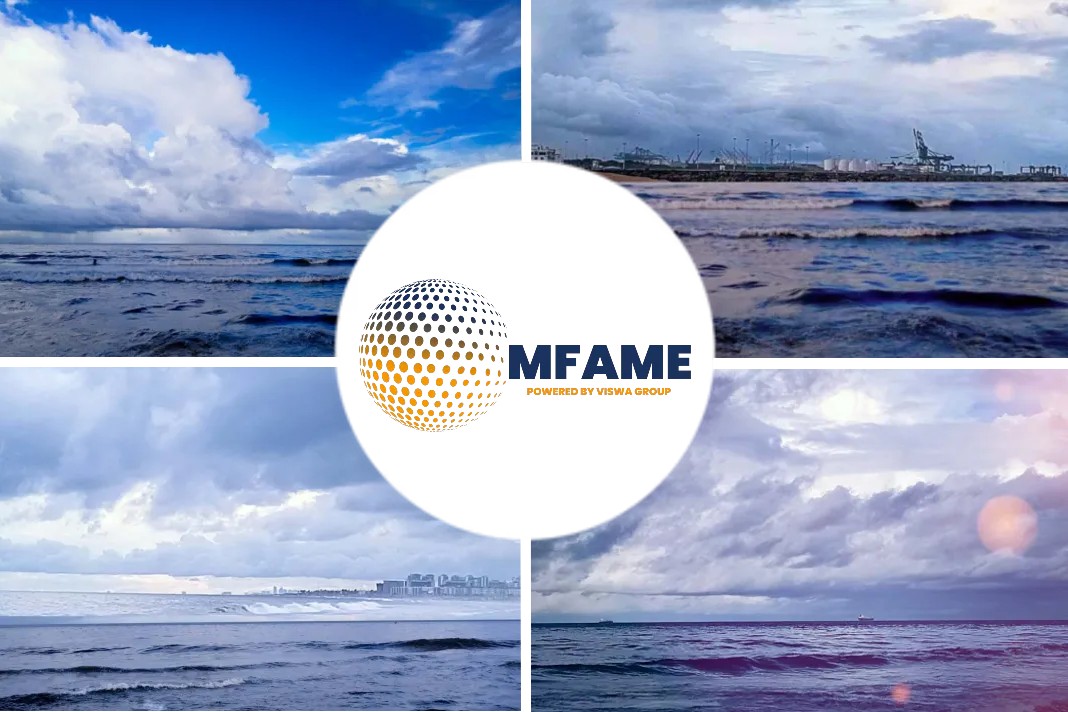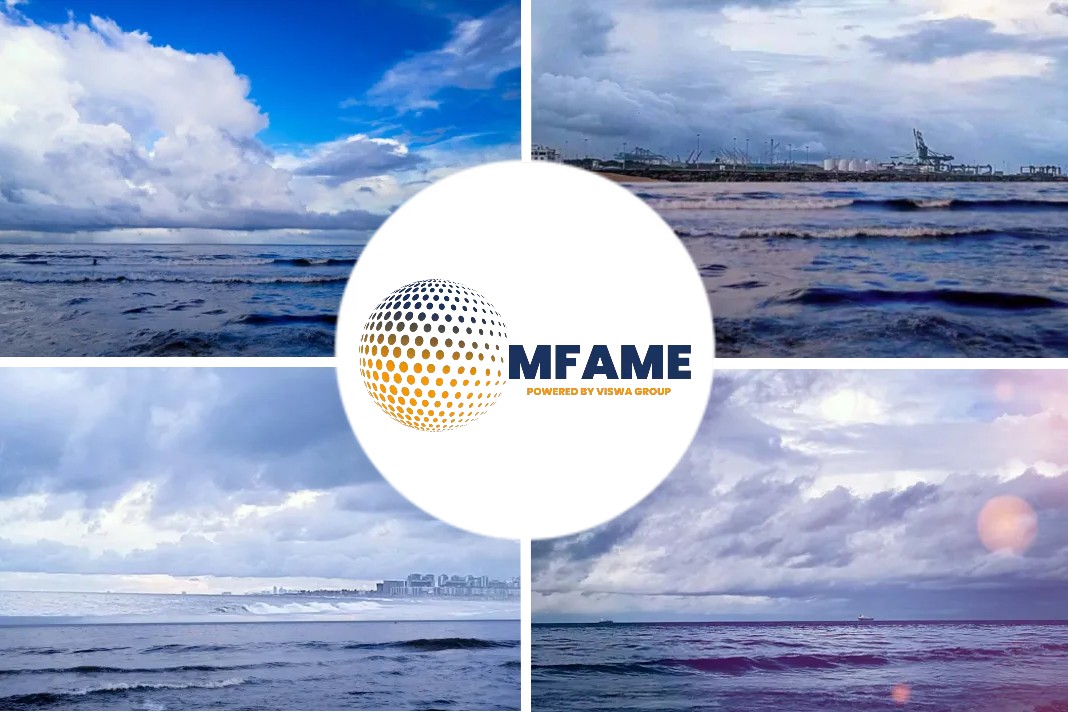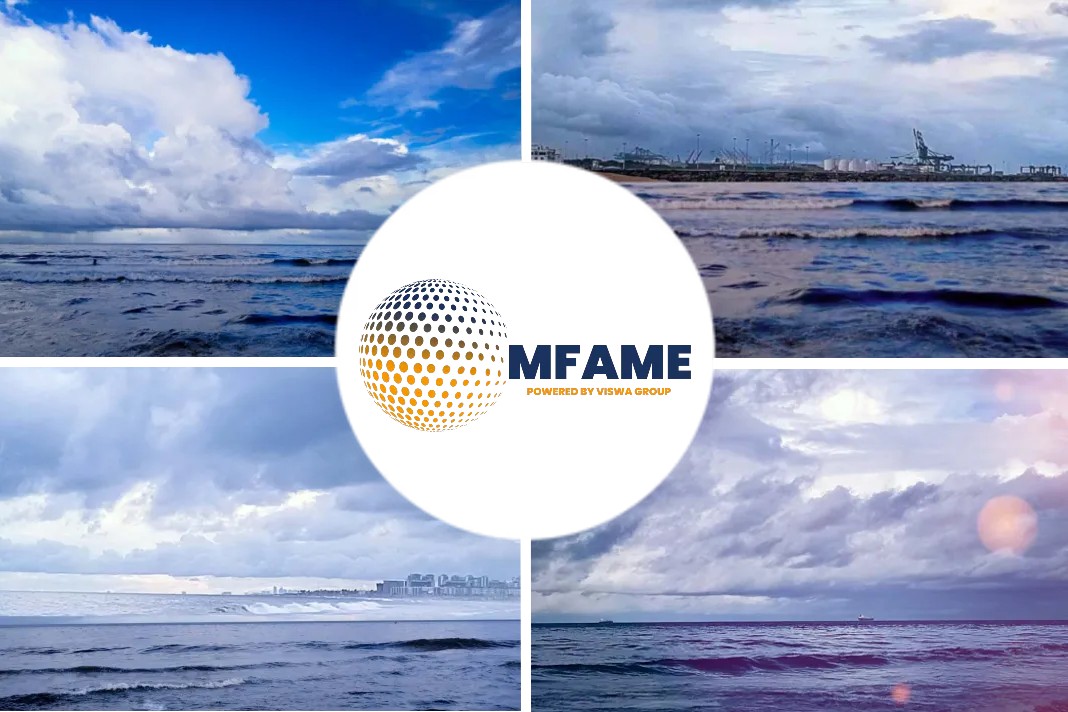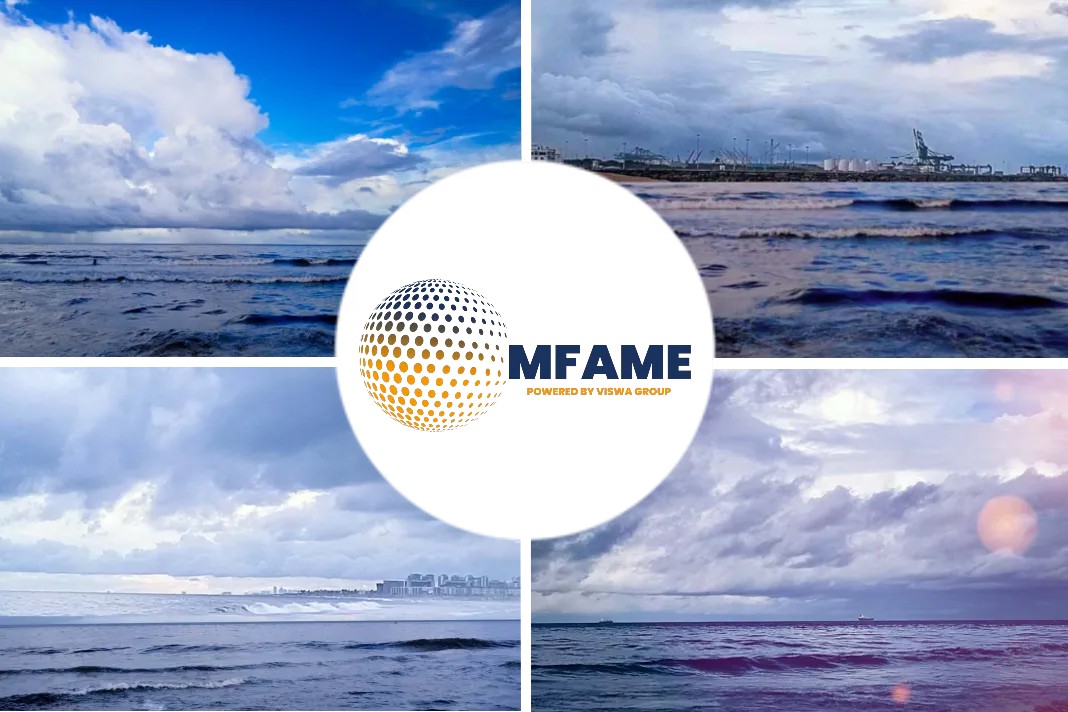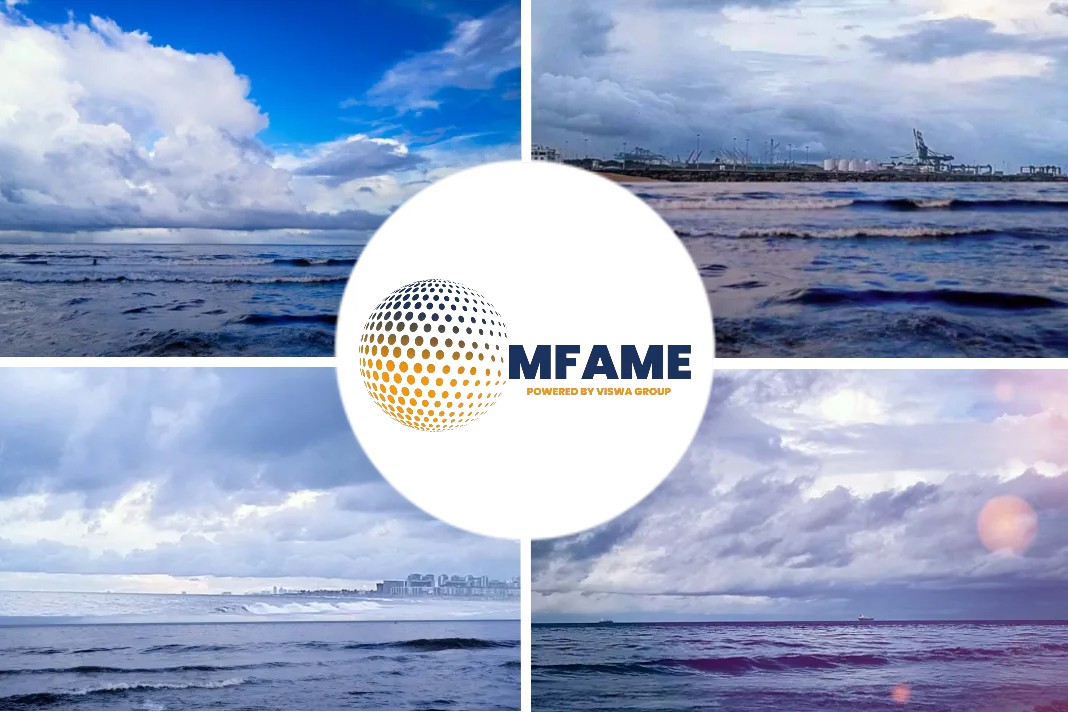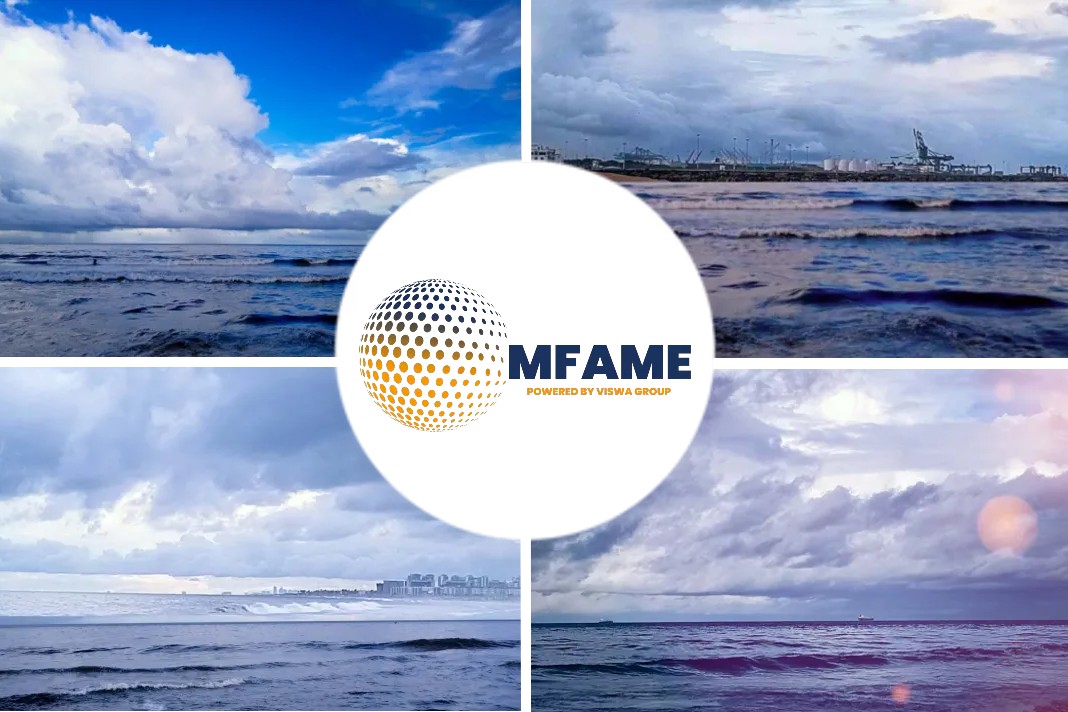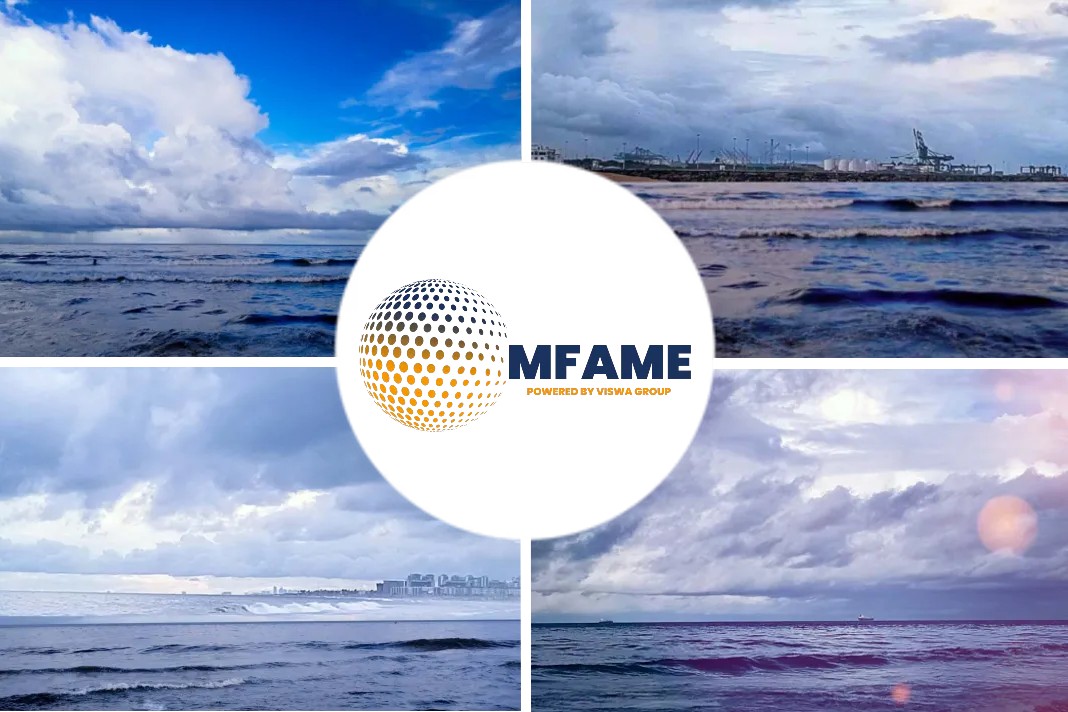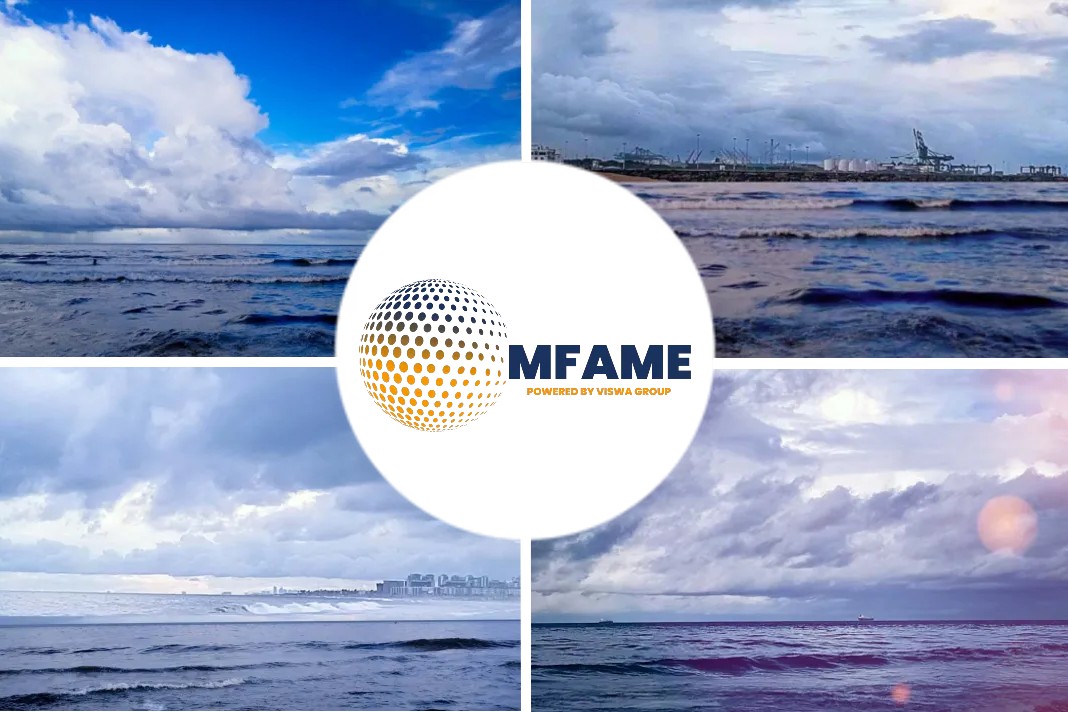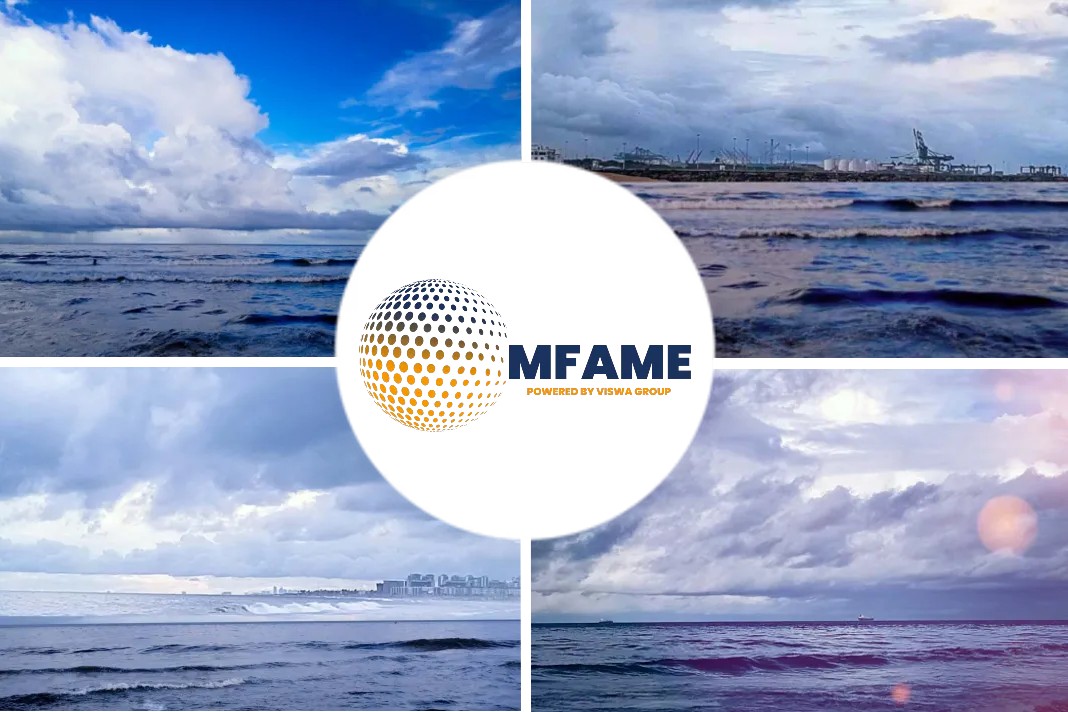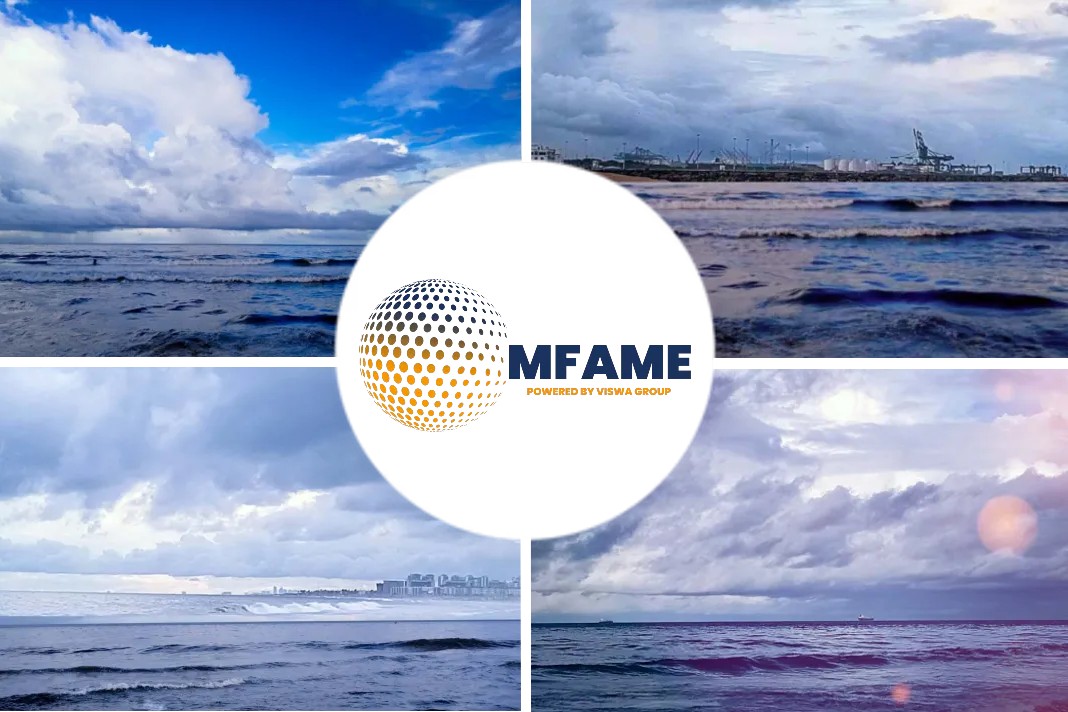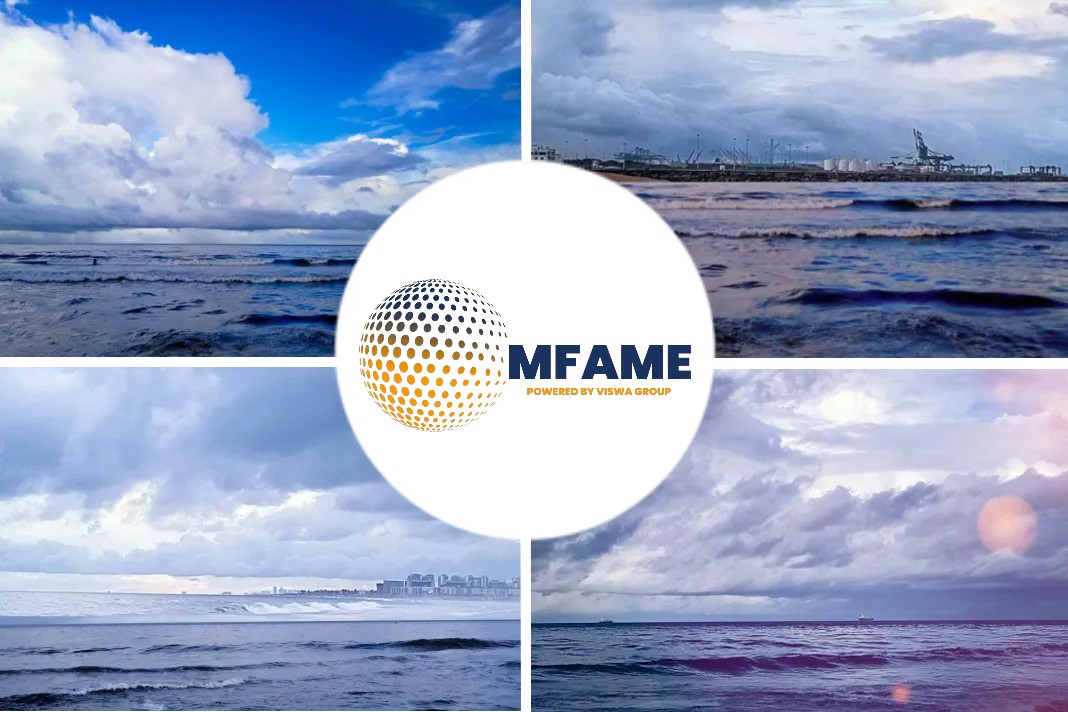- A detailed satellite analysis has revealed the sinking location to be near an European territory.
- This opens up fresh political debate regarding the salvage operation.
- The finding could lead to an EU sanctioned investigation as it falls in their territory.
2 months of speculation later, we are finally close to finding the secret location of the Mauritius Oil Spill Disaster Ship, Wakashio, reports Nishan Degnarian for an article published in Forbes.
Mystery of the Final Location
For two months, there has been great secrecy and controversy surrounding the location of where the large front section of the Wakashio bulk carrier was deliberately (and potentially illegally) sunk, after causing the worst oil spill in Mauritius’ history
Although the Mauritius Coastguard released images and videos of the vessel being scuttled, the final location of the 300 meter long front section (called the bow) was never disclosed amid unusually tight secrecy. A cone of silence has descended around officials in Mauritius, the Dutch salvors engaged by the vessel insurer Japan P&I Club, the Japanese owners and operators of the vessel, as well as officials in France, who had all declined to comment when approached about the sinking of the Wakashio and their roles.
Satellite Analysis Confirms Location
It is now clear why there was so much secrecy. For the first time today, satellite analysis conducted exclusively for this article in Forbes by global maritime analytics firm Windward, can finally reveal the final resting place of the large front section of the Wakashio.
It reveals that of all the locations that the Wakashio could have been sunk in, the salvage team could not have picked a worse spot.
The sinking location will now present a double-whammy for both Mauritius and the French-territory of Reunion Island for decades to come.
Up for a political strife?
As Reunion island is a French territory, it is also part of the European Union and subject to European Union law, including pollution laws. The Dutch-owned salvage team could have picked any spot in the ocean that would not have impacted Reunion Island, but instead chose this one. It is slap bang in the middle of the main currents that take debris straight onto Reunion Island. There has been no accountability for their actions to date.
With questions still raging about the extreme toxicity of the contents of the Wakashio, and over 50 whales and dolphins discovered dead within hours of the scuttling of the vessel on August 24, there is an ever growing list of human health and environmental concerns by local fishing communities in Mauritius that remain unanswered.
Turbulence in Mauritius Media
This comes as the Government of Mauritius has started to arrest environmental activists and leading journalists in the country amid extensive reporting of cyber interference from those who have expressed dissent against the Government. There has been growing tensions on the Indian Ocean island in the aftermath of the massive oil spill, widespread concerns, and numerous legal cases that have challenged the legitimacy of the disputed 2019 General Elections, and whose results were rejected by all major opposition parties for the first time in Mauritius’ history.
Could this prompt an EU investigation?
Windward’s satellite analysis of the sinking location, combined with advanced pollution drift analysis, now raises questions about whether the European Union should be launching their own investigation to understand the risks that could be caused by the Wakashio to the EU’s territory – Reunion Island – which is subject to EU law.
Other Issues Highlighted in the Analysis
The other big revelation from the satellite analysis conducted by Windward, was that something went very badly wrong during the sinking.
- It is clear that the operation had to pivot 90 degrees a day into the towing of the Wakashio’s bow.
- It was this pivot that put the Wakashio directly into harms way with a new sinking location.
Had the Wakashio been towed to a shipyard (as Greenpeace had called for) or taken to a location beyond the currents, then there would have been little risk of the debris, potentially polluted ballast water, or any chemicals from the slowly disintegrating wreck ending up on Reunion Island.
Finding Likely To Question Salvage Team’s Decision
Questions will now have to be asked about what made the salvage team decide to change direction on August 19, who was consulted, and was the final sinking location the same as the one that had been discussed and agreed with French Officials.
French Minister for Outer Island Territories, Sebastien Lecornu, was the last senior French official to have met with the Mauritian Prime Minister, Pravind Jugnauth in Mauritius on August 16, before the sinking operation began. A statement by the Government of Mauritius released on August 19 revealed that the sinking had been carried out with the support of the three French experts from CEDRE and Cellule Anti-Pollution brought over by Minister Lecornu.
In order to grasp the implications of these new satellite revelations, it is important to first understand what was known about the decision to sink the Wakashio until this point.
MOBILISATION NATIONALE WAKASHIO
Having had the giant Wakashio on Mauritius’ reefs since Saturday July 25, Mauritians woke up on Tuesday 18 August to news that the Wakashio had been dragged off the reefs at the crack of dawn with no prior warning to the country. No information had been provided about the location, and extensive damage to the important coral reefs were seen by air and from space during the salvage operation.
Later that day, Mauritius’ Minister of Blue Economy made a statement to parliament stating that a towing operation was to begin. The statement said, “Consultations are underway on the appropriate manner to dispose of that part of the vessel,” even though the vessel had already been towed earlier that morning.
This was the last time the Mauritian parliament met (over two months ago), before the Government decided to suspend parliament, to the anger of opposition parties and over 100,000 citizens who turned out in protest on August 29 at the lack of accountability over the salvage and oil spill response given the impact the Wakashio is having on the country.
Satellite analysis was able to track the operation to tow the front section of the Wakashio, which was featured in an article on Forbes on August 19. Seen above is the AIS and Synthetic Aperture Radar satellite analysis of which vessels were involved, the direction of travel, and the condition of the Wakashio’s hull, which appeared to be floating well (raising questions why it was not towed on a floating dock or a shipyard to be scrapped in accordance with international IMO law, known as the Hong Kong Convention on Safe Ship Recycling, which is the responsibility of the flag state, Panama, to enforce).
Satellite imagery taken at the time by private satellite provider, Maxar, captured the operation to tow the Wakashio early in the morning on August 19, which was being led by two Malta-registered vessels. Malta is party to the IMO’s ship pollution laws called Marpol, and Greenpeace wrote to Malta’s Director Shipping on August 25 asking what actions the Malta authorities will be taking. Greenpeace has not yet heard back.
Satellite analysis showed that Wakashio’s bow was being towed around 13 kilometers in a South East direction toward Antarctica.
There was no Government update on August 20, and on August 21, the UN’s International Maritime Organization’s representative on Mauritius revealed the following facts about the operation for the first time.
In a televised press conference, sitting next to the Deputy Commissioner of the Mauritius Police, Matthew Sommerville revealed that:
Five sites were originally identified for the salvors to tow the vessel for repair work (he did not give reasons why these options were rejected).
Specifically on the sinking, the IMO representative said, “Initially three locations were identified where the waters were deep enough but were in the territorial waters of Mauritius. They were considered. Further advice was taken. Some of that further advice came from neighboring countries. Reunion [Island, a territory of France] had some requests regarding the position. Wildlife considerations were taken into account… In the end, a fourth location was identified where the planned sinking could occur.”
Based on this statement by the UN’s IMO on August 21, there are now questions about whether the location where the Wakashio was finally sunk was consistent with this pre-agreed locations discussed in the days prior?
If so, very serious questions must be asked about how over 50 whales and dolphins ended up dead just after the scuttling, what was on board the Wakashio that was so toxic and why would one wish to sink the vessel directly in the currents that would take debris back onto the East Coast of Mauritius and onto Reunion Island? This is why the unaccountable operations of the IMO, ITOPF and Japan P&I Club (who were responsible for selecting the salvors, SMIT Salvage) have been so heavily criticized.
At this point, the only other official information released was from the Coastguard of Mauritius. They released one video and four images of the Wakashio sinking on August 24.
However, everything else about the sinking operation had remained a mystery, until now.
What today’s new analysis reveals
To understand what the analysis reveals, it is important to first understand the images. The images show the individual tracks of each vessel over several days.
In the map below, the individual track of the Boka Expedition large tugboat can be seen. The Boka Expedition was one of the vessels linked to the towing operation, and has since attracted further attention with the fire on the oil tanker off the coast of Sri Lanka last month.
More Revelation from the Satellite Analysis
Further satellite analysis reveals the five vessels involved in the sinking operation.
Combining all tracks together of the five vessels, it is clear that the focus of attention moved from the area in the South East of the coastline, to one which is more firmly Eastern.
This is at the confluence of many Easterly currents coming from Australia, and this has two serious consequences for the location chosen.
First, this location makes no sense. As the giant front part of the ship breaks up (it is longer than the Titanic and almost as long as the Eiffel Tower), various toxins, chemicals, ballast water and the hull will be slowly released over decades or even centuries.
Such deepwater environments have low oxygen, and as wooden wrecks from the Napoleonic-Nelson wars of the 1810s show, they can often remain intact for centuries.
So debris will affect the fragile, slow growing corals along Mauritius’ East Coast over this period, including several of the protected regions such as Blue Bay Marine Park and the Ramsar protected mangrove forests along the entire Eastern coastal regions.
Impact on Reunion Island
In addition, it is only when the location of the sinking is seen in the context of Mauritius’ sister island, Reunion Island, the gravity of the situation becomes clear.
Had the Wakashio not changed direction on August 19, both islands could have been spared. Whoever made that fateful decision will have to be held to account.
It was that turn that put the Wakashio in harms way of not one, but two islands with over 2 million people on both.
After the sinking operation was concluded, it was clear there was a need to check up on the location of the sunken Wakashio bow for some reason. Mauritius Coastguard vessel, Valiant, came back to this location on August 24, as can seen in the satellite tracks below. Soon after the sinking, adverse environmental phenomena started to pop up along the Southern, Eastern and Northern coasts of Mauritius. This starts tor reveal a nightmare pattern potentially connected to the location where the vessel was sunk.
The decision and choice of the location where to sink the Wakashio had very serious environmental consequences indeed, such as the deaths of over 50 whales and dolphins.
Coincidence?
Another coincidental choice of where to sink the Wakashio is that this happens to be close to the location where the Wakashio decided to adjust its course away from Mahebourg at the last moment when coming to Mauritius on July 25.
Perhaps this was just pure a coincidence, but as we’ve seen with the Wakashio to date, nothing ever appears to be what it seems.
Understanding Indian Ocean currents
While satellite imagery in isolation may only give certain insights, it is only when combining this with deep understanding of Indian Ocean currents, that the true gravity of the situation emerges.
French scientists, Stéphane Pous, Pascal Lazure, Gaël André, Franck Dumas, Issufo Halo and Pierrick Penven, conducted deep modelling of the ocean currents between Mauritius and Reunion Island in 2014.
Their results, published in the Journal of Geophysical Research, and entitled, “Circulation around La Réunion and Mauritius islands in the south‐western Indian Ocean: A modeling perspective,“ contains various descriptions about the strength of the currents at different times of the year. During the months of August to October (the winter months in the Southern Hemisphere), the ocean currents flow in a Westerly direction straight into Reunion island.
These results were backed up by Australia’s leading marine scientists at Australia’s national research group, CSIRO.
Following the disappearance of Malaysian Airlines MH370 in March 2014, and a piece of debris being found on the shores of Reunion Island in July 2015, a team of Australia’s leading researchers led by CSIRO’s David Griffin, conducted one of the most thorough investigations of ocean currents in the Indian Ocean. This work was commissioned by the Australian Transport Safety Bureau. Their thousands of simulations all reveal similar ocean current patterns where debris from Mauritius would end up in Reunion Island if left in the wrong spots (i.e., the East Coast of Mauritius).
Debris field heading toward Reunion Island
This means that the debris field from the sunken Wakashio would be heading straight toward Reunion Island as the Wakashio disintegrates over time.
Risk
With no inventory of hazardous materials on board (as required by IMO international laws under Marpol regulations), there are serious consequences for those who have sunk a vessel that breaks these laws and are now polluting European Union territory.
The effects of sunken metal wrecks on the marine environment around the world has been well documented.
The time for impunity may soon be reaching an end for those who were responsible for this act.
Influential Mauritian Diaspora in France
Both France and the EU are likely to face pressure to conduct a public inquiry into the risk and hazard posed by the Wakashio, given Reunion Island has over 800,000 on the island, and that there is an influential Mauritian diaspora in France and other European capitals.
Large protests were held in Paris on 29 August, in protest at the decision to sink the Wakashio and the overall oil spill response, and with evidence that the pollution from the Wakashio could now be heading into French territory, this would put even more pressure on French and European authorities to conduct an assessment of the risk and inquiry into how this risk ever came to materialize.
Given that the salvors were flagged in Malta (a European Union country) and SMIT Salvage is owned by Dutch giant, Royal Boskalis, there is an increasing European dimension to the Wakashio affair.
The EU has one of the world’s leading maritime investigation arms, the European Maritime Safety Agency (EMSA). It is EMSA’s core mandate to ensure safe shipping around the world, including reducing the risk of pollution from shipping.
There has been a big focus on improving sustainability in the maritime sector as part of EMSA’s latest five year strategy, and with the ramifications of the Wakashio likely to be felt for years to come, it will be important for a thorough investigation to understand the risks posed to an EU territory.
Questions That Remain Unanswered
As part of any European inquiry into the sinking of the Wakashio, the following questions will need to be addressed:
- What risk does the sunken Wakashio’s bow pose to Reunion Island, a French and EU territory? This includes an assessment of the cargo, the oil, ballast water, construction materials of the vessel, as per UN IMO shipping laws, condition in which it arrived on the ocean floor, assessment of the likely degradation over years, with associated impact. With the deaths of over 50 whales and dolphins straight after the initial sinking, a serious assessment will be needed to understand the impact on marine biology in the region.
- Were all procedures correctly followed with the decision to sink the Wakashio’s bow? This includes an audit of all the formal documentation before any such sinking could take place, as required by the IMO.
- What alternatives to sinking the bow was considered, and why were they rejected? In particular, why was the Wakashio bow not gently lifted off the reefs of Mauritius without causing any damage and transported by dry dock, given the relatively calm weather since then on the West Coast of Mauritius.
- Who was responsible for deciding on the final sinking location of the Wakashio bow?
- Was the final sinking location one of the four initial sinking locations that were shortlisted, as revealed by the IMO in the August 21 press conference?
- What was the advice of the three French Government experts who advised on the sinking of the Wakashio bow?
- What role did the vessel insurer – the Japan P&I Club – play in the decision to sink the Wakashio, as they were the legal party responsible for commissioning the salvors and safely removing the wreck as the Wakashio’s insurers?
- What role did Panama play in the sinking of the Wakashio, given their responsibilities as Wakashio’s Flag State to comply with the Hong Kong Convention on Sound Recycling of Ships?
- What role did the Mauritian authorities play in the sinking of the Wakashio? This is especially pertinent, given that the legal authority of the political representatives in Mauritius has been questioned under judicial review, which is likely to be heard in the UK’s Privvy Council, given the legal system in Mauritius.
- What responsibility does Malta have, given that two of its vessels, the Boka Summit and the Boka Expedition were the vessels responsible for towing the Wakashio and dumping it in the ocean? Greenpeace has already identified some of Malta’s responsibilities as a signatory to Marpol.
- Should the Wakashio be removed from its resting place and taken to a shipyard to be safely recycled and reduce the risks to Mauritius and Reunion Island over the long term, as leading Ocean Scientist Dr Sylvia Earle has called for under the Nairobi Convention on Wreck Removal?
- Did the sinking of the Wakashio’s bow and subsequent drift into the coast of Reunion Island break any of the six laws that have been listed on the marine environment alone? In particular, Marpol Annex I, Marpol Annex V, Hong Kong Convention on Sound Recycling of Ships, Inernational Convention on Anti-Fouling on hips, Ballast Water Convention, Nairobi Convention on Wreck Removal. What are the lessons for these laws, and how should they be more effectively operationalized for a safer and cleaner marine environment.
- What role did the IMO play in the sinking of the Wakashio’s bow, given the prominent and detailed statements at the 21 August press conference? The IMO were engaged in Mauritius an OPRC(90) arrangement, yet these statements seem to imply that the IMO exceeded its mandate whilst in Mauritius potentially breaking several of its own IMO laws and having disastrous consequences for Mauritius and Reunion Island.
- Given controversy about tampering with the oil fingerprinting in Mauritius, how would EMSA characterize the nature of the hazard of the oil spilled, and what risks this could pose to Reunion Island over the longer term? With the stern of the Wakashio still on Mauritius’ reefs and salvors yet to begin work dismantling, there is still time for EMSA representatives to collect samples and conduct the relevant analyses, especially as the IMO has already admitted it does not know the effect of this oil on the marine environment, which it mandated be introduced.
- Given the impact on Reunion Island, what was the original cause of the Wakashio grounding, and what are the lessons for Reunion Island to learn and prevent such similar pollution events from ever re-occurring and impacting the EU territory in the future?
The saga in Mauritius has dragged on long enough, and a professional investigation such as by the European Maritime Safety Agency could start shedding light on how such as shipping disaster could have gotten so far out of hand, with so many unanswered questions about the root causes and pollution impact on an EU territory.
Conclusion
It is clear that satellite analysis from private providers have shed more light on the Wakashio than the dozens of statements from the authorities from Panama, Japan, Mauritius and the over 100 international consultants who appear to have caused more harm than good to the island nation, without any accountability for the damage caused.
Such satellite analysis should form a critical part of any global response going forward. Just as a robust evidence base for the environmental impact of the oil spill and salvage operation will need to do.
The French Embassy in Mauritius, authorities in Reunion Island and French Minister for the Outer Territories, Sebastien Lecornu, were approached for a comment ahead of publication of this article. No response was received.
Did you subscribe to our daily newsletter?
It’s Free! Click here to Subscribe!
Source: Forbes






